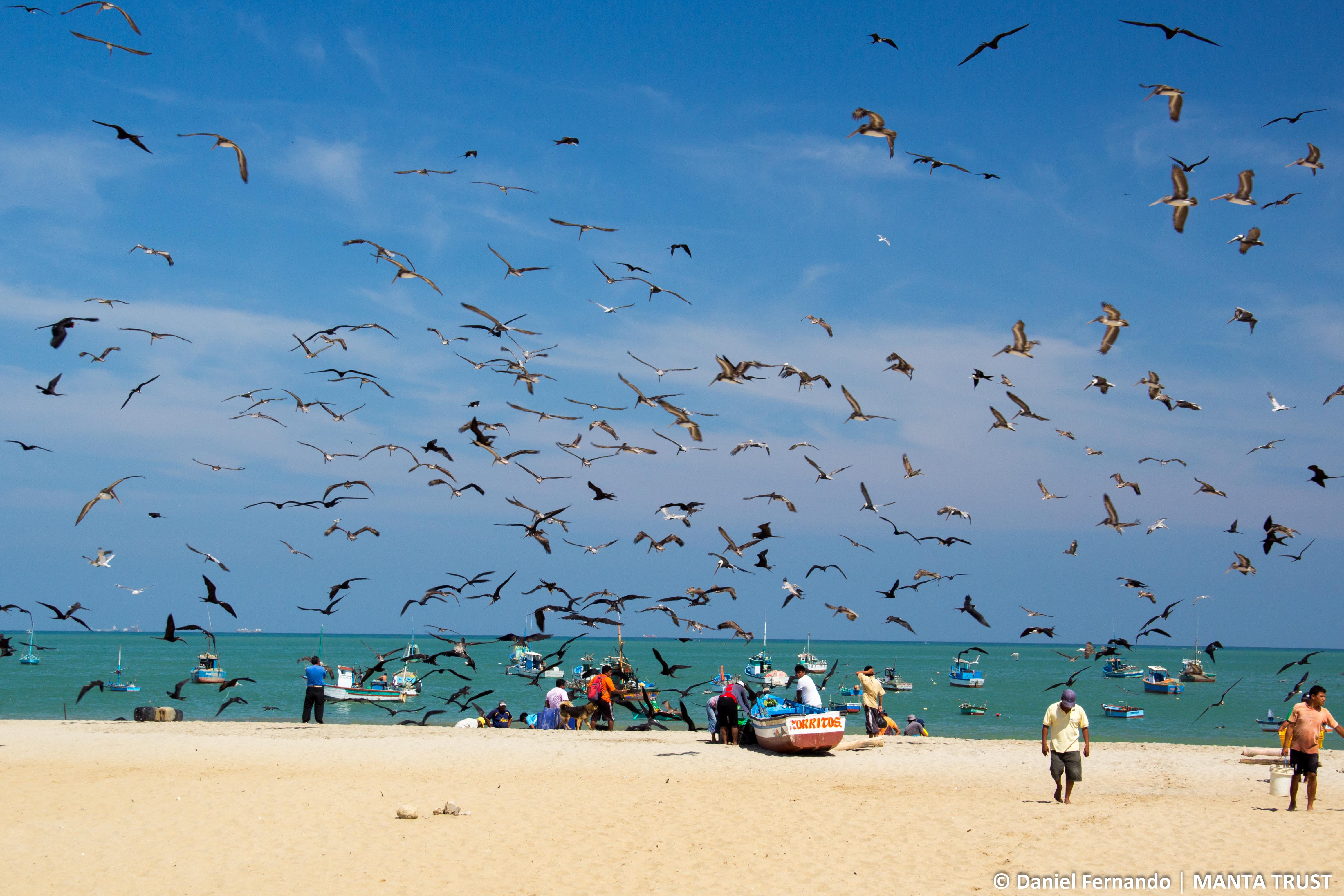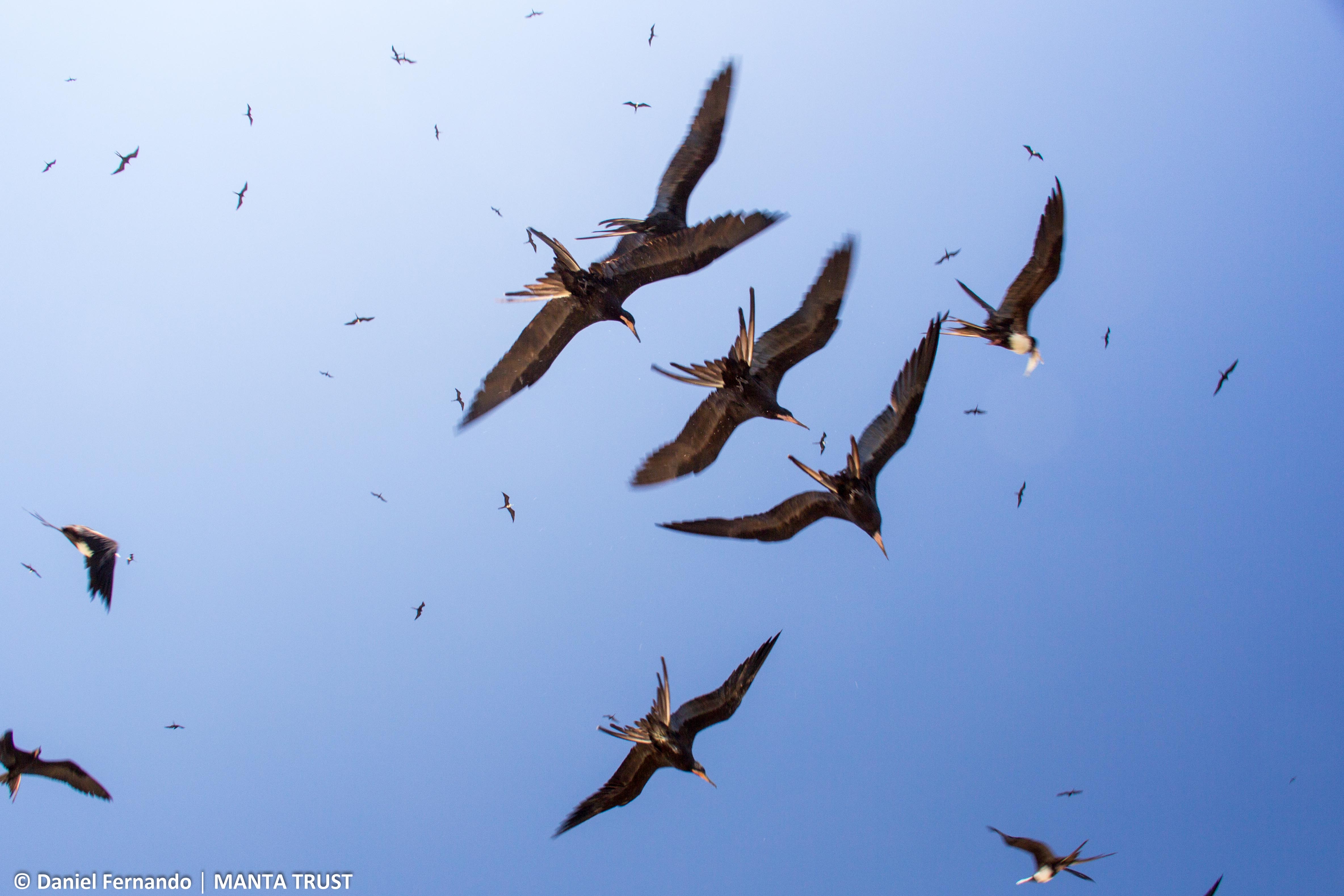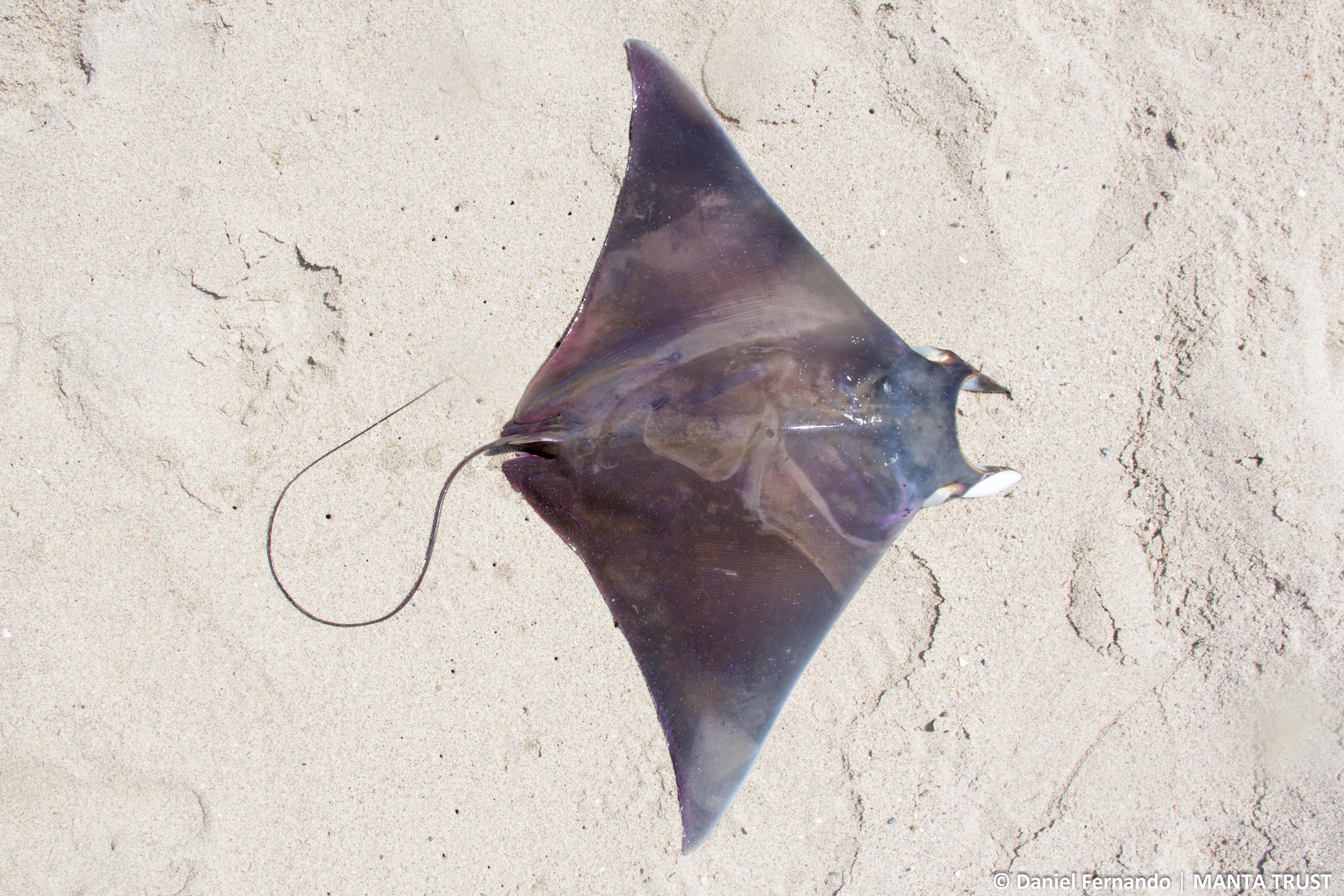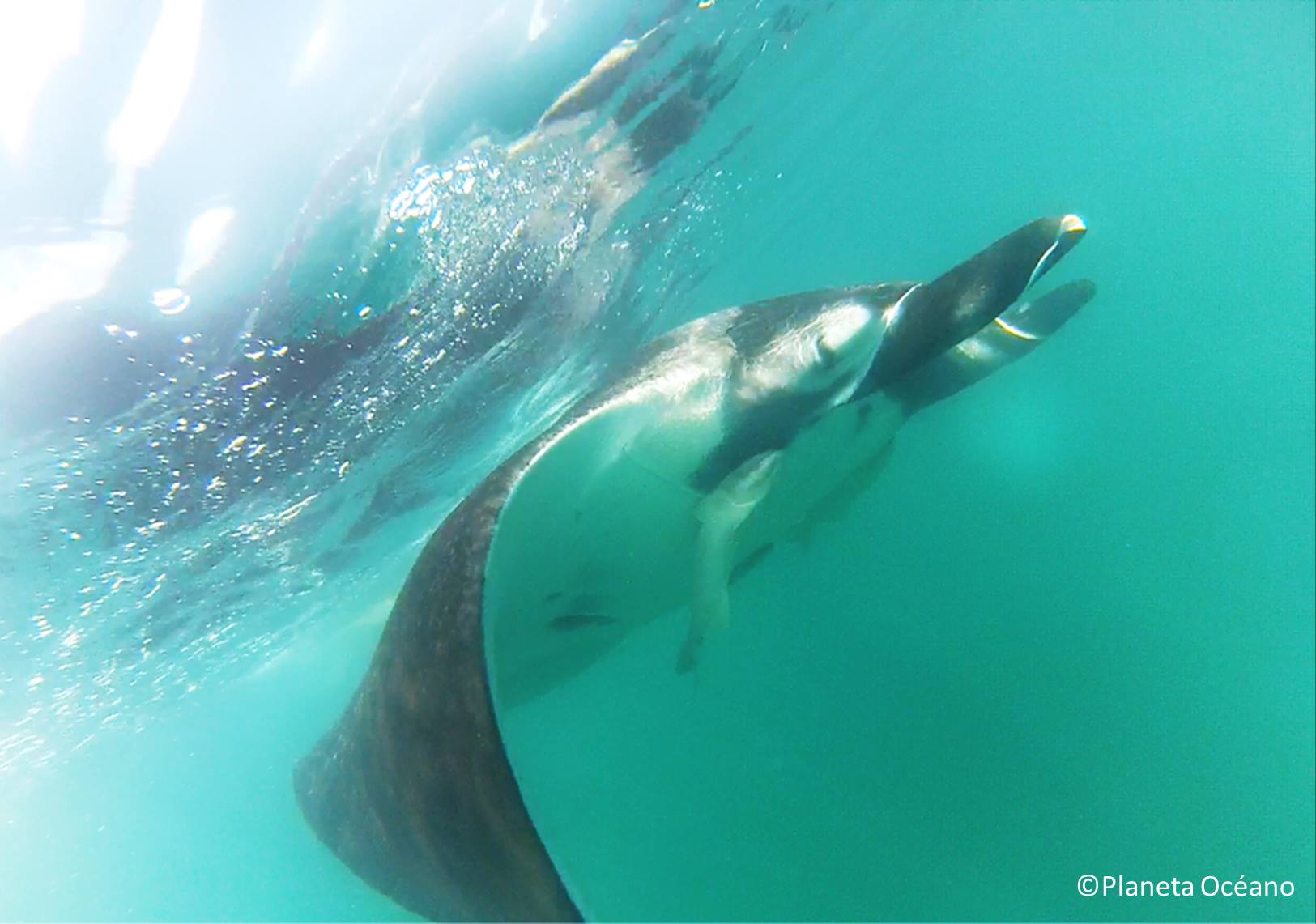CMS, a Fishy Peruvian Market and a Day Swimming with Giants!
Just over two weeks ago at an altitude of 2,800m in Quito, Ecuador, surrounded by #SharkNRay conservationists, I found myself celebrating the incredible success of two proposals submitted by the Government of Fiji to list Manta alfredi and all Mobula spp. under Appendix I & II of the 11th COP for the Convention on the Conservation of Migratory Species (CMS). These two listings were closely followed by the listing of several shark species and all sawfishes, greatly increasing the number of marine species covered by this convention. It is indeed #Time4Action and we are greatly looking forward to expanding the incredible collaborative effort between international NGO’s, IGO’s and governments to help ensure that these 21 listings get implemented!
My travels did not end in Quito though! A short flight followed by a not so short bus ride led both Isabel (Head of Conservation, The Manta Trust) and myself to Zorritos, a small town near Tumbes in the north of Peru! Here we joined our colleagues from Planeta Océano for a quick investigation of the mobulid fisheries and to trial manta ray watching as a sustainable alternative to the local fisheries!
I was back in my element at the fish market, which this time was on a scenic beach surrounded by hundreds of birds swooping down to snatch fish when the fishermen were not paying attention to their catch!
Our local colleagues were however quick to switch our attention to some crates packed full of juvenile mobula rays. A closer inspection of these rays revealed them to be Mobula munkiana, a species described by Giuseppe Notarbartolo di Sciara, who happens to be my co-author on the Save our Seas Foundation funded project to write the global mobulid identification guide book!
It was disheartening to see so many juvenile rays being killed to supply meat for a local delicacy eaten by certain communities further down the Peruvian coast. However there was not much time to contemplate that since the fishermen were preparing to transport the rays away! With help from our local Planeta Océano colleague, we borrowed one of the rays for a photo-shoot. These images are vital to help build up the ID guide and given that these species will now be afforded additional protection under CMS, tools such as this ID guide will become invaluable instruments in helping governments gather the necessary data to ensure adequate protection of these species.
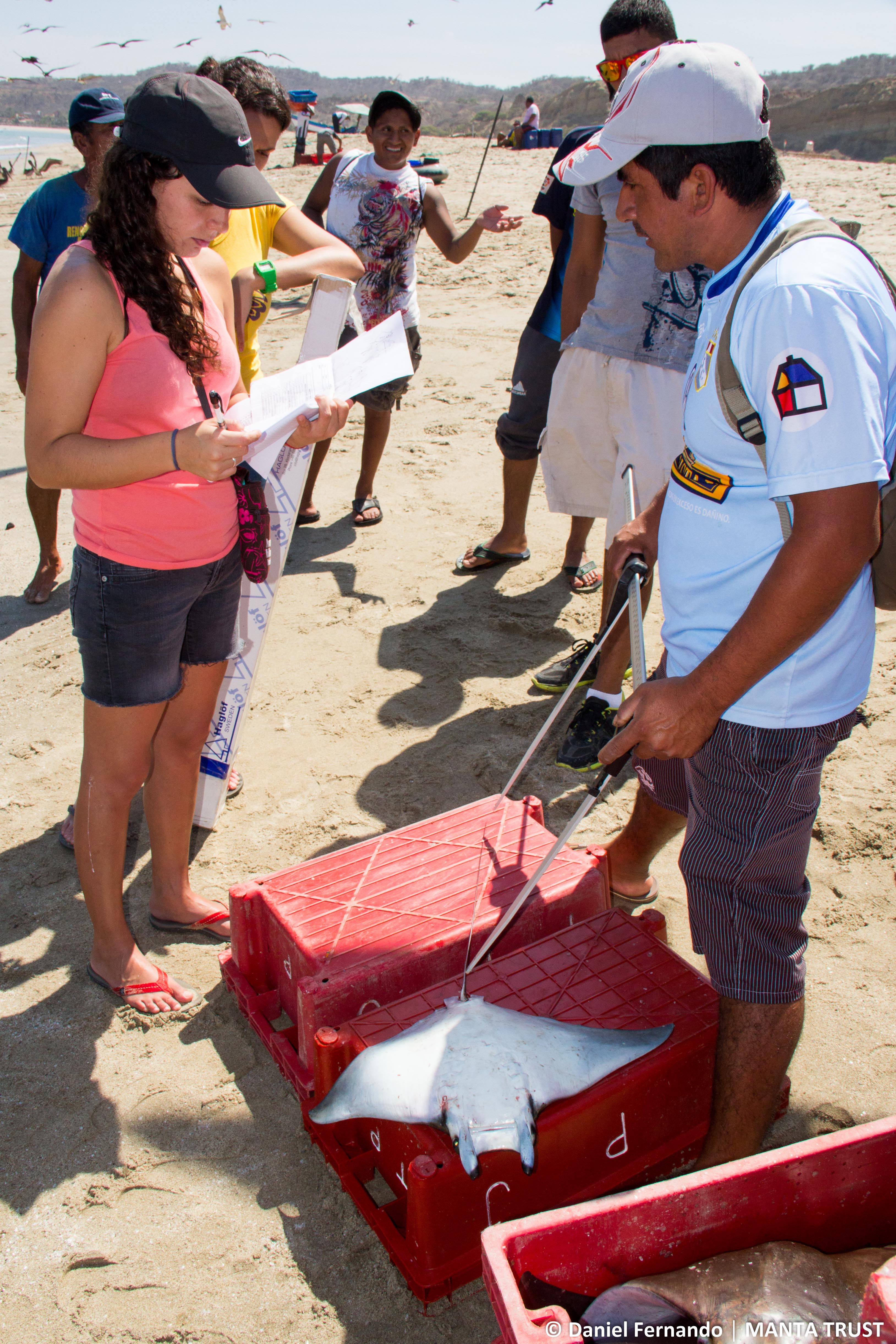
© Daniel Fernando – researchers from Planeta Océano taking careful measurements of the landed mobula rays
Our colleagues at Planeta Océano are not just recording fisheries data but also working to encourage local fishermen make a switch to sustainable manta ray watching. This included conducting research trips to identify areas of high manta activity. Blue skies, sunshine and calm seas – how could we resist? A few hours later and we were gently bobbing about on a fishing boat amidst the offshore oil platforms. It did not take long for the keen eyes on deck to spot a fin breaking the surface of the water….manta ray!
I have seen over a 100 of these giant manta rays in the past 3 years, yet sadly all of them were dead at fish markets, so this was my chance to finally see them alive. I got in the water so quickly that I even forgot to take off my t-shirt – but at least I had my mask and snorkel! The next few hours flew by as we dropped in time and time again, snorkelling with at least 8 of these graceful giants.
It was such a privilege to observe oceanic manta rays glide past in the warm waters of Peru and also extremely encouraging to see NGO’s such as Planeta Océano working hard to protect both the manta and mobula rays. There is great potential in switching to alternative sustainable methods while still maintaining the livelihoods of fishermen and we all look forward to this being a reality in the near future.

